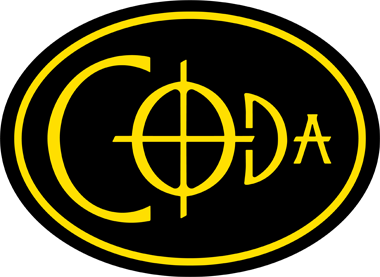There are many types of flutes in the world: https://en.wikipedia.org/wiki/Flute
Both recorders and Coda EDC Flutes are considered duct flutes, or fipple flutes. However, while the recorder is a tubular duct flute…
Coda belongs to an ancient family of musical instruments known as vessel flutes, or globular flutes, dating back several thousand years. Today, different types of vessel flutes go by many names around the world: gemshorn, xun, ocarina, hun, tsuchibue, etc.
Is Coda an Ocarina?
Well, Coda is a unique type of vessel flute. Ocarinas are also vessel flutes. So, it’s up to you.
After laboring for years to develop Coda, I chose not to call it an ocarina for a few reasons.
1st, Coda doesn’t look like any existing ocarinas because it was painstakingly designed with EDC in mind. (EDC means EveryDay Carry.) In practical terms, single ocarinas of similar pitch to Coda are still a bit larger and heavier than Coda even though they have much less range. Double ocarinas do have the range of Coda, but they are significantly larger and heavier, which makes them unsuitable for everyday carry. Coda’s combination of two chromatic octaves with full sound, and tough, light portability makes it unlike any ocarina.
2nd, Coda’s interior chamber design is unlike that of existing ocarinas, which allows it to have a wide range and big sound with a surprisingly small footprint.
3rd, Coda’s patented Uni-Phi™ tone holes are unique. They were designed to allow a more intuitive, fluid fingering pattern than those used by double chamber ocarinas. For instance, Coda uses only one set of toneholes to play both the upper and lower chambers, and you can use the same fingerings to play the 2nd diatonic octave as you do to play the 1st. In contrast, on a double ocarina you have to slide your right hand fingers back and forth between two separate sets of tone holes, and the fingerings for the 2nd diatonic octave are completely different than those of the 1st. (Of course, if you already play a double ocarina really well, you may prefer what you are used to.)
My Background Making Vessel Flutes
I first became smitten with vessel flutes nearly 25 years ago when I purchased a tiny clay ocarina from a Honduran street vendor in Boston. That particular instrument was musically limited and far too fragile, but it inspired me to see the potential of a take-along flute, one that could fit into adult life and accompany me on my adventures.
Eventually, I left teaching to start prototyping and then manufacturing my own tiny, tough vessel flutes: Mountain Ocarinas. They were wonderful, but –as a musician– I always wanted a bit more range than only an octave and a third.
Skipping forward a couple of decades…
Coda EDC Flutes are the long-term result of pursuing a clear goal:
- to create a true everyday carry flute
- with intuitive fingering
- and great sound
- across two chromatic octaves (C5 to C7, plus).
And Finally… How Does Coda Compare to a Recorder?
Coda’s simple linear fingering pattern is similar to that of the recorder and to the rest of the woodwind family. However, Coda is only 5 inches long (12.7 cm), so you can easily bring it along with you. In contrast, soprano recorders are usually about 12.5 to 13.25 inches long (31.75 to 33.655 cm).
Furthermore, the recorder’s lowest notes tend to be very quiet (you get drowned out when playing with other musicians), whereas the uppermost notes are very loud. In contrast, Coda’s lower octave is strong, and the upper octave is not louder than the lower.





